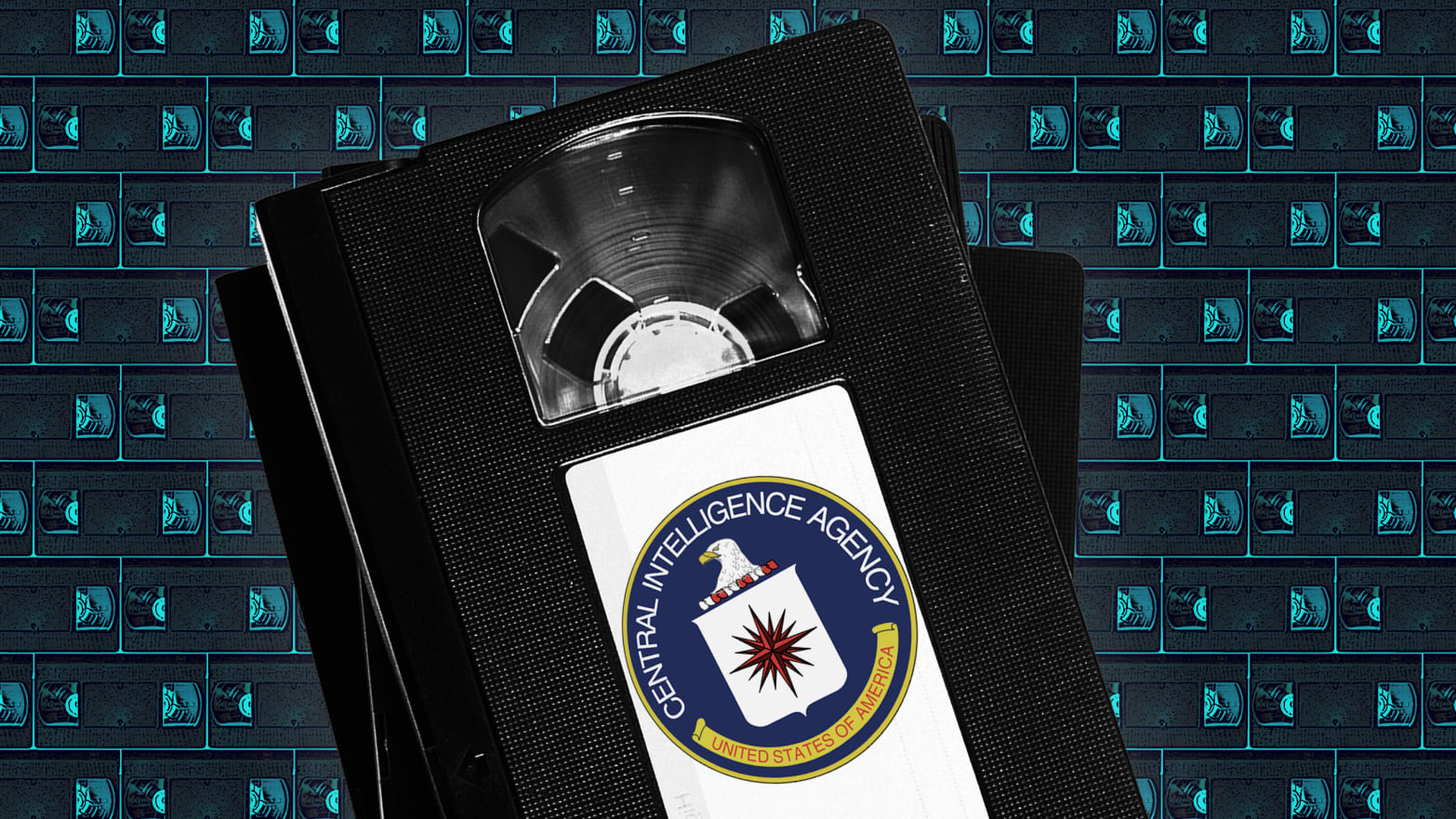Some videotapes recording the torture of a CIA detainee may have survived the 2005 destruction facilitated by Donald Trump’s nominee to run the agency. That’s according to an ex-CIA analyst who reviewed massive amounts of internal CIA documentation about torture and said she was told by a colleague that some of the tapes survived.
The analyst’s assertions are the basis for a new motion filed in federal court by the legal team of tortured terror suspect Abu Zubaydah, whose waterboarding and other brutal interrogation was the subject of most of the 2002-era videos.
On Tuesday morning, an attorney for Abu Zubaydah, Joseph Margulies, requested a federal judge to permit the filing of a motion compelling the Office of the Director of National Intelligence to perform a search for the tapes and attest to the results of the search under oath. Should the tapes and related documents still indeed exist, the motion requests their immediate delivery to a court security officer.
“For years, the CIA told Petitioner and the rest of the world that it had destroyed the tapes of his torture,” Margulies writes. “We now know that a copy of the tapes likely exists. In this motion, we seek relief to correct this state of affairs.”
If any tapes still exist, their existence has implications for Gina Haspel’s potential CIA directorship. In November 2005, Haspel drafted a cable for her boss, clandestine-service chief Jose Rodriguez, ordering the destruction of the videotapes. For years Rodriguez had urged his superiors to destroy the tapes, out of a stated fear that the brutality depicted on them would inevitably leak and place the CIA interrogators, whose faces were supposedly visible on the recordings, in jeopardy.
The former CIA analyst does not have first-hand knowledge that the tapes survived. Her account comes from an April 2013 conversation with a CIA colleague who told her that some of Abu Zubaydah’s tapes still existed at the time of their discussion. Her colleague, whom The Daily Beast has not interviewed and whose identity The Daily Beast does not know, denied to investigators for Abu Zubaydah’s legal team any memory of telling the ex-analyst about the tapes.
But the now-retired analyst, Gail Helt, said she memorialized their conversation in a notebook she kept at the time, a copy of which The Daily Beast has seen. Haspel’s nomination has compelled her to disclose what she heard, Helt said.
“I’m coming forward with this now because I feel very strongly this come to light due to the nomination of Ms. Haspel to run the agency,” said Helt, who has never told this story to the press before.
“If she is connected to this [torture] program, and I certainly believe she is, and these tapes exist, it’s in the public interest that we all know what the government has done and could potentially do again. That really concerns me.”
Haspel’s nomination hearing before the Senate intelligence committee is scheduled for May 9.
Helt understood that the Office of the Director of National Intelligence (ODNI) had received the surviving tapes years ago. But Brian Hale, a spokesperson for the office, denied knowledge of ODNI’s custody of any Abu Zubaydah videotapes, he told The Daily Beast.
“Your source is wrong,” said CIA spokesman Ryan Trapani.
Additionally, Helt, whose final years with the agency saw her tasked with reviewing internal CIA cables about its former black-site prisoners, said that she saw repeated instances of the agency inflating the threat Abu Zubaydah supposedly posed to the U.S. that were unsupported by the underlying cables. That first-hand account bolsters a central claim of the Senate committee’s 2014 torture report: that the CIA lied about the men in its custody.
The destruction of the tapes came despite the wishes of George W. Bush’s administration and hesitation from senior CIA attorneys. It was a watershed moment for oversight of post-9/11 torture, leading directly to a Justice Department special prosecutor’s investigation and the Senate intelligence committee’s landmark 2014 torture report. Ironically, destroying tapes of the brutal interrogations of both Abu Zubaydah and Abdul Rahim al-Nashiri led to additional disclosure of CIA torture.
Rodriguez, perhaps the CIA alumnus who defends torture most vigorously, was the central figure in the destruction of the tapes. As a self-appointed “chief operations officer” in CTC, who took over the center in May 2002, Rodriguez calls the program “legal, authorized, necessary and safe” in his 2011 memoir Hard Measures. There, he uses the cover name “Jane” to describe a “superstar” woman now known to be Haspel. Rodriguez “had her head one of our earliest ‘black sites,’” he writes, and “later she became my right arm as chief of staff when I led the clandestine service.”
Rodriguez assumed that position in November 2004. By then, he had already been pressing for two years to destroy 92 videotapes made at the Thailand black site that displayed the torture of Abu Zubaydah and Nashiri in 2002. The rationales for taping those early interrogations included, Rodriguez later wrote, showing that “if he died it wasn’t our fault.” But since the tapes showed interrogators’ faces, he and others at CIA had “serious safety concerns for the people depicted on the tapes and their families.” But Rodriguez said he received years of “hand-wringing and bureaucratic backpedaling” from CIA attorneys, including John Rizzo.
Rizzo’s memoir puts it somewhat differently. Rizzo likens the question of destroying the tapes to “a big turd dumped on my desk.” The two men are consistent in describing senior officials punting on the issue, rather than rejecting the destruction outright. But Rizzo wrote that “destroying the tapes was fraught with enormous risk for the Agency,” since “someone does something like that when he has something to hide.” It wasn’t until June 2004 that a different CIA lawyer informed his White House counterparts that the tapes existed and the agency planned to destroy them. “Their reaction was immediate and unanimous: ‘You plan to do what?’” Rizzo writes. (Rizzo’s memoir refers to 96 videotapes, while every other source, from Rodriguez’s book to a 2004 CIA inspector general’s report, pegs the number at 92 tapes.)
Neither Rizzo nor Rodriguez immediately responded to requests for comment.
By fall 2005, Rodriguez was beyond “frustrated,” he writes. His “chief of staff,” Haspel, held a meeting with CTC’s attorneys—not Rizzo’s in the CIA Office of General Counsel. To a presumably more receptive group of lawyers, or at least ones who weren’t teetering on the edge of refusal, she asked if destroying the tapes was legal and if Rodriguez had the authority to do it. When she got back a “yes,” Haspel drafted a cable granting permission for the field agents to destroy the tapes that “left nothing to chance. It even told them how to get rid of the tapes,” through use of an industrial shredder. Rodriguez describes himself as doing little more than “hit[ting] Send” on the Haspel-penned cable on Nov. 8, 2005, and learning the next day, Nov. 9, that the deed was done—meaning neither he nor Haspel personally witnessed the destruction of the tapes.
The following day, an unnamed CIA official wrote to the agency’s third-in-charge, Executive Director Kyle “Dusty” Foggo, that he or she was “no longer feeling comfortable” about the tape destruction, which may have been “improperly” done. Their communication is partially redacted, after being declassified and released to the ACLU in a transparency lawsuit, but it seems to call Haspel’s honesty into question (PDF).
The cable was “apparently drafted by [redacted] and released by Jose,” as theirs were the only two names on it, the official wrote to Foggo in the first of several apparent references to Haspel. Either that unnamed official “lied to Jose” about clearing the cable with an unidentified colleague and the inspector general—which the official said was “my bet”—or “Jose misstated the facts.” The official added that “it is not without relevance” that “[redacted] figured prominently in the tapes, as [redacted] was in charge of [redacted] at the time and clearly would want the tapes destroyed.” Haspel briefly ran the black site where Abu Zubaydah was tortured, though she did so after his torture there occurred.
It took until December 2007 for word of the destruction to emerge—thanks not to any CIA declaration, but to a New York Times story.
From 2012 to 2014, CIA analyst Helt was assigned to the obscure Office of Detainee Affairs. It was a CIA bureau established to help implement President Barack Obama’s order to empty the Guantanamo Bay detention facility, where Abu Zubaydah and other black-site denizens now reside. Since a portion of the office’s mandate was to aid Guantanamo defense attorneys’ requests for information they could present to the military commissions or their habeas corpus petitions in federal court, Helt and a colleague had access to millions of secret CIA records concerning the torture program.
In April 2013, Helt told The Daily Beast, her colleague informed her that some of “the tapes still exist.” The CIA colleague, in Helt’s recollection, archived the surviving tapes and sent them to the Office of the Director of National Intelligence for storage at its headquarters complex in northern Virginia, known as Liberty Crossing.
Also, Helt said her colleague told her that the CIA had destroyed pages of a diary Abu Zubaydah had kept. Included in the pages was a drawing Abu Zubaydah had made, apparently depicting even more brutal torture methods than those exposed by the Senate report and authorized by the CIA and Bush administration. “He drew something like he was seated in an electric chair,” Helt said she learned from this colleague.
“We told DOJ [the Department of Justice] they didn’t exist and they did,” Helt recalled her colleague telling her about the tapes.
In advance of Haspel’s confirmation hearing, the CIA recently declassified a 2011 memorandum, penned by then-senior official Michael Morell, that concluded Haspel acted “appropriately” in facilitating the tapes destruction (PDF). Morell considered Haspel to be following Rodriguez’s orders, rather than acting on her own initiative. She acted, “incorrectly, it turns out,” based on a mistaken understanding that Rodriguez would obtain official approval from then-CIA Director Porter Goss for the destruction, Morell found.
“Although there is no ‘good soldier’ defense in the case of an act that violates the law or Agency regulations, the Special Prosecutor evidently found no prosecutable offense, nor did I find a violation of Agency regulations,” Morell wrote about Haspel.
Ryan Trapani, a CIA spokesman, defended Haspel’s role in the tapes destruction in an earlier conversation with The Daily Beast.
“With respect to the videotapes, Haspel has been consistent and clear about her role. She did not appear in the videotapes, nor did she make the decision to destroy them,” Trapani told The Daily Beast.
“That decision was made by Rodriguez, who has publicly taken responsibility for his decision. She made sure CIA lawyers were consulted. She made sure the affected officers, whose security was at risk from al Qaeda, were consulted. And she provided the draft cable to Rodriquez with the understanding that he would use the draft cable to raise the issue with Director Goss. When she subsequently saw that Rodriguez had sent the cable to the field, she asked Rodriguez whether he had raised the matter with Goss. Rodriguez told her that he had not talked to Goss and he had sent the cable out based on his understanding of his authority.”

